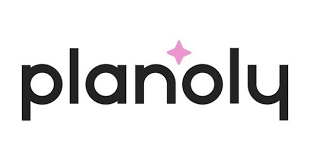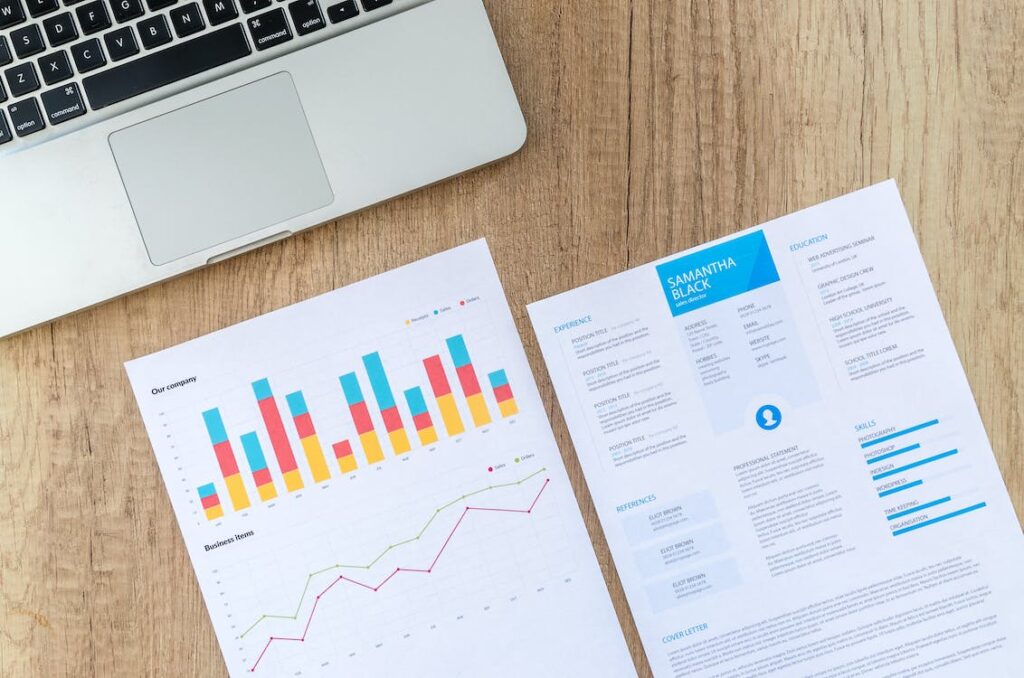Welcome to the ultimate showdown between two of the most popular social media management tools in the market today: Loomly and Planoly. If you’re struggling to decide which one is the best fit for your social media needs, you’re in the right place. We’re diving deep into what sets these tools apart, ensuring you make an informed decision tailored to your specific needs. So, grab a cup of coffee, and let’s get started!
| Loomly | Planoly |
|---|---|
 |  |
| G2 Score – 4.6 out of 5 stars | G2 Score – 4.3 out of 5 stars |
| TrustRadius Score – 8.3/10 | TrustRadius Score – 8.8/10 |
Ease of Use: User Interface and Experience
Loomly: Intuitive and User-Friendly
Loomly stands out with its intuitive user interface. From the get-go, you notice the clean layout, making navigation a breeze even for beginners. The dashboard is well-organized, and you can easily access different features like the calendar, analytics, and post builder.
One of the things I love about Loomly is how it simplifies the process of creating and scheduling posts. The platform offers a step-by-step guide, which is fantastic for those who might feel overwhelmed with content creation. You start by selecting your social media channels, then move on to crafting your post. Loomly even provides post ideas, which is a game-changer if you’re ever stuck in a creative rut.
Another feature that enhances Loomly’s ease of use is its asset management system. You can store images, videos, and post templates, which is a huge time-saver for recurring themes or campaigns. Also, their mobile app is incredibly user-friendly, allowing you to manage your social media on the go.
Planoly: Designed with Visuals in Mind
Planoly, on the other hand, takes a slightly different approach. It’s particularly loved by Instagram users for its visual-focused interface. The grid planner is a standout feature, allowing you to see exactly how your Instagram feed will look once your posts go live. This is crucial for brands or influencers where aesthetics are key.
Navigating through Planoly is also straightforward. The drag-and-drop functionality for planning your feed is not only fun but incredibly efficient. It’s like playing a puzzle game where each piece is a part of your brand’s story.
One area where Planoly really shines is in its story planning feature. You can design, organize, and schedule your Instagram Stories, which is a big deal considering how important Stories have become. The platform also supports direct publishing to Instagram, which is a huge bonus.
However, while Planoly is fantastic for visual planning, it might not be as intuitive for users who are more focused on content beyond just visuals. The textual content creation is there, but it’s not as front-and-center as it is in Loomly.
Content Planning and Scheduling
Loomly: A Comprehensive Approach
Loomly truly excels in the realm of content planning and scheduling. The platform offers a detailed calendar where you can view your scheduled posts across all social networks. This holistic view is crucial for maintaining a consistent posting schedule and ensuring that your content strategy aligns with your marketing goals.
What sets Loomly apart is its dynamic calendar. Not only can you schedule posts, but you can also set up reminders for events, holidays, or specific campaigns. This feature is particularly useful for planning content around key dates and staying ahead of your content game.
Another great aspect of Loomly is its advanced scheduling options. You can set specific times for your posts to go live, or let Loomly pick the best time based on when your audience is most active. This takes a lot of guesswork out of the equation and helps in maximizing engagement.
Planoly: Streamlining Instagram Content
Planoly’s strength lies in its focus on Instagram content planning. The grid layout tool is a standout, allowing you to visually plan your Instagram feed. This ensures a cohesive and aesthetically pleasing grid, which is critical for Instagram success.
The platform also offers a calendar view, but it’s more visually oriented, aligning with the needs of Instagram users. You can drag and drop images in the calendar, making it easy to rearrange your feed as needed.
However, where Planoly might lag is in its scheduling versatility across different platforms. While it’s excellent for Instagram, users who manage multiple social media platforms might find it lacking compared to Loomly’s comprehensive scheduling features.
Analytics and Reporting
Loomly: In-Depth Insights Across Platforms
Loomly’s analytics capabilities are quite robust, offering in-depth insights that can help you fine-tune your social media strategy. What makes Loomly’s analytics stand out is its cross-platform reporting. You can track your performance across different social networks, giving you a comprehensive understanding of your overall social media impact.
The platform provides detailed metrics on engagement, reach, and audience demographics. This data is crucial for understanding what content resonates with your audience and why. Loomly also offers suggestions on improving your posts based on these metrics, which is a valuable feature for continuously refining your strategy.
Another advantage of Loomly is its custom reporting feature. You can create tailored reports focusing on the metrics that matter most to your business. This level of customization is excellent for presenting data to team members or stakeholders in a format that’s most relevant to them.
Planoly: Focused Visual Analytics for Instagram
Planoly’s analytics are more focused on Instagram, offering detailed insights into your Instagram account’s performance. You can track likes, comments, followers growth, and more. The platform’s visual analytics make it easy to understand your Instagram engagement and growth at a glance.
One of the unique features of Planoly’s analytics is the ability to analyze your Stories’ performance. Given the importance of Instagram Stories in today’s social media landscape, this feature is incredibly useful for measuring the impact of your Stories content.
However, if you’re looking for comprehensive analytics across various social media platforms, Planoly might not meet your needs as comprehensively as Loomly.

Related: Check out our free SEO suite

Analytics and Reporting: Measuring Success
Loomly: In-Depth Insights
In the dynamic landscape of social media, understanding the impact of your content is crucial. Loomly stands out with its comprehensive analytics capabilities, offering a deep dive into the performance of your social media activities. This platform doesn’t just present data; it interprets it, providing actionable insights that can guide your content strategy.
One of the hallmarks of Loomly’s analytics is the granularity of the data provided. You can dissect the performance of each post, getting insights into metrics like reach, engagement, and click-through rates. This level of detail is invaluable for social media managers who need to understand what type of content resonates most with their audience and why.
Loomly goes a step further by offering suggestions based on data analysis. These suggestions can be about the best times to post or the types of content that are likely to perform better, helping you refine your strategy over time. This feature is like having a virtual assistant who’s constantly analyzing your social media performance and offering tips for improvement.
Moreover, the platform’s customizable reports are a significant advantage, especially for those managing social media for multiple clients or stakeholders. You can tailor these reports to highlight the metrics that matter most to your audience, making your reporting efficient and relevant.
Planoly: Focused Visual Analytics
Planoly’s approach to analytics is tailored to the platform’s strong suit – visual content, particularly for Instagram. The analytics feature in Planoly provides a clear and concise view of how your visual content is performing. It focuses on key Instagram metrics such as impressions, engagement rates, and follower growth, which are crucial for anyone looking to build or maintain a strong Instagram presence.
What stands out about Planoly’s analytics is their user-friendly presentation. The data is easy to understand at a glance, making it less daunting for users who might be overwhelmed by more complex analytical tools. This simplicity is particularly beneficial for content creators and small business owners who need quick insights to guide their visual content strategy.
However, it’s worth noting that while Planoly offers valuable insights, its analytics are predominantly Instagram-centric. This focus can be a limitation if you are managing a diverse social media portfolio across multiple platforms and need a more holistic view of your social media performance.
Collaboration and Teamwork Features
Loomly: Enhancing Team Collaboration
In the bustling world of social media, collaboration is not just a feature, it’s a necessity. Loomly stands tall in this arena with its comprehensive set of tools designed to enhance team collaboration. The platform is a boon for teams of all sizes, from small businesses to large agencies, offering a seamless workflow that caters to various needs and roles within a team.
One of the most impressive aspects of Loomly is how it handles role assignments and permissions. This functionality is particularly important in a team setting where clarity of roles and responsibilities can make or break the efficiency of content creation and management. By assigning specific roles and permissions, Loomly ensures that team members have clear boundaries and understand their specific tasks, thereby streamlining the workflow.
The feedback and approval process in Loomly is another feature that stands out. It provides a structured approach to content creation, where team members can easily give and receive feedback. This process is crucial, especially when multiple stakeholders are involved, as it helps in maintaining the quality and consistency of the content. The approval process also adds a layer of control, ensuring that only the content that meets the set standards gets published.
Additionally, Loomly incorporates a chat feature within the platform, facilitating real-time communication among team members. This feature is a game-changer as it reduces the reliance on external communication tools and keeps all discussions centralized and accessible. It enhances the team’s ability to quickly discuss and make decisions on posts, leading to a more efficient and cohesive workflow.
Planoly: Simplifying Collaborative Visual Planning
Planoly takes a slightly different approach to collaboration, one that’s more focused on the visual aspects of social media, particularly Instagram. It’s evident that Planoly values the power of visual storytelling and provides tools that allow multiple users to contribute to the visual planning of an Instagram feed. This is especially useful for teams where the visual branding and aesthetic of the Instagram feed are of paramount importance.
While Planoly does allow for commenting on posts and providing feedback, its approach to collaboration is more streamlined and less about detailed project management. It’s more suited for scenarios where quick visual coordination and feedback are required, rather than intricate task assignments and approval workflows.
| Loomly | Base Plan: Starting at $26 per month (billed annually) for 2 users and 10 social accounts, including basic analytics and post scheduling. Standard Plan: At $59 per month (billed annually), offering 6 users and 20 social accounts, with advanced analytics and custom workflows. Advanced Plan: Starting at $129 per month (billed annually), with 16 users and 35 social accounts, plus more advanced features. Premium Plan: At $269 per month (billed annually), for 26 users and 50 social accounts, including all features and priority support. |
| Planoly | Free Plan: Planoly offers a free version that includes 1 user, 2 social profiles (Instagram and Pinterest), and 30 uploads per month per profile. Solo Plan: Starting at $7 per month (billed annually), this plan includes 1 user, 2 social profiles, and unlimited uploads. Duo Plan: Starting at $15 per month (billed annually), offering 2 users, 2 social profiles, and unlimited uploads, plus additional analytics features. Custom Plan: Planoly also offers custom plans for businesses with greater needs, which include more social profiles and additional features. |
Conclusion
In conclusion, choosing between Loomly and Planoly for your social media management needs boils down to understanding your specific requirements and priorities.
Loomly emerges as a comprehensive tool that offers a detailed approach to content creation, scheduling, analytics, and collaboration. Its strengths lie in its robust scheduling features, comprehensive analytics, and extensive collaboration tools. Loomly is particularly suitable for businesses and agencies that manage multiple social media platforms and require a structured approach to content strategy and team collaboration.
Planoly, on the other hand, is tailored more towards visual content creation, particularly for Instagram. Its grid planner and visual analytics are invaluable for those who prioritize Instagram aesthetics and storytelling. While it may not offer as extensive features in analytics and collaboration as Loomly, it excels in providing a user-friendly and visually oriented experience, making it ideal for influencers, small businesses, and brands focused primarily on Instagram.
Read Next
- The Role of Visuals in Email Marketing: Enhancing Engagement with Images and GIFs
- Email Marketing for Subscription-Based Services
- The Importance of Deliverability in Email Marketing: Ensuring Your Messages Reach the Inbox
- Email Marketing for Events and Webinars: Boosting Attendance and Engagement
- The Role of Mobile Optimization in Email Marketing Success






















Comments are closed.